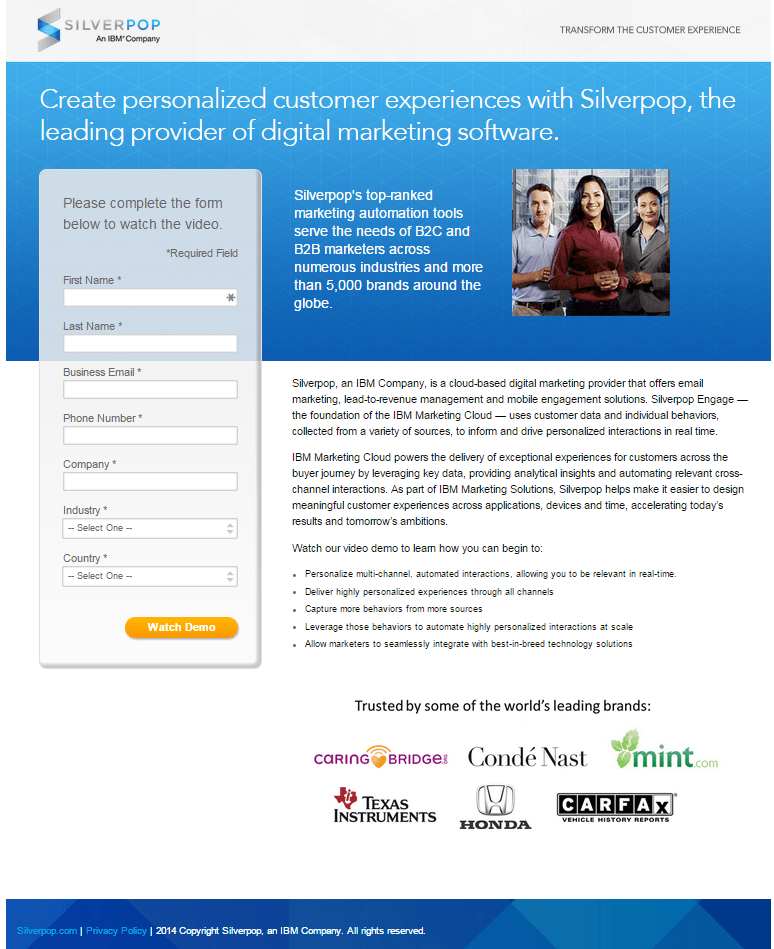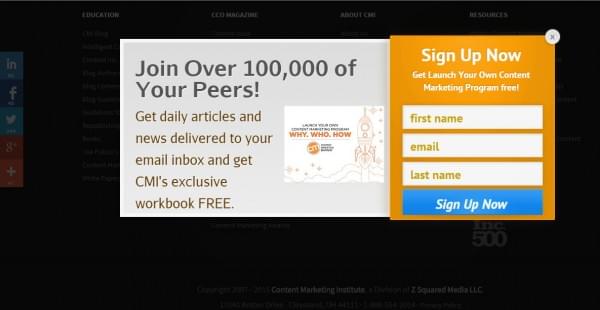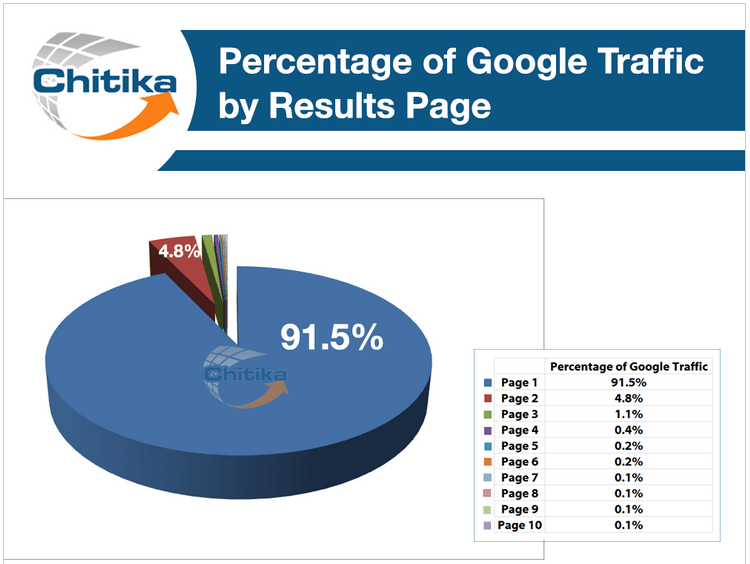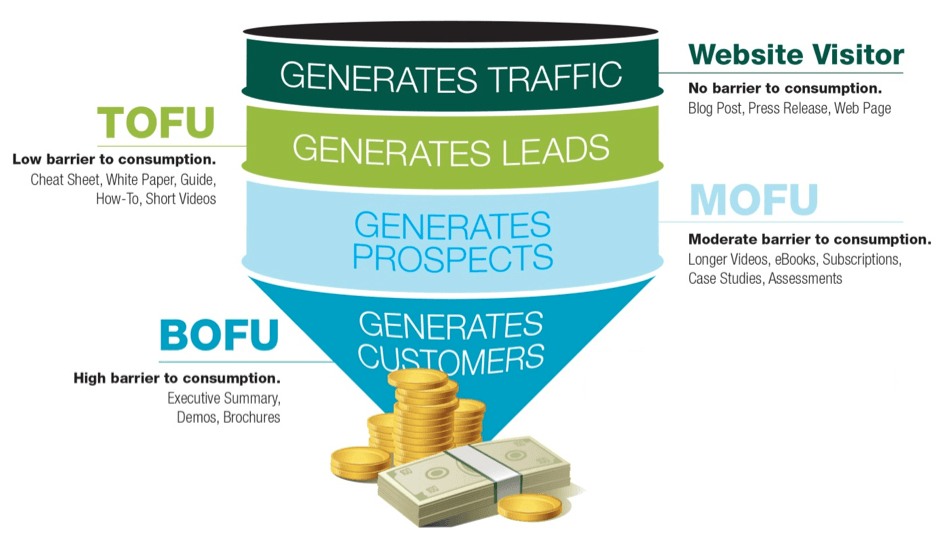Inbound marketing is the new panacea. It’s less intrusive. It’s organic. It’s (supposedly) cheaper. But it’s also easier to talk about than it is to successfully manage . . . especially when it comes to lead generation.
Inbound lead generation is the marriage of inbound philosophy with traditional B2B marketing. This union isn’t surprising, considering the two already have similar objectives. According to a recent study by NetProspex, the top objectives for inbound marketing are to improve lead quality, increase sales revenue, and increase conversion rates:

Your inbound lead generation is failing. But why?
In this post, we’ll look at nine possible reasons. As you read through the list, try to troubleshoot your own inbound strategy and identify points of weakness.
SEE ALSO: 10 Ways to Improve Your Lead Conversion Rate
1. Mediocre Content
Despite advancements in technology, the written and spoken word is still the most powerful form of communication. In marketing, words are the foundation of all content — from articles to ebooks to podcasts to videos. At its best, content tells a story. The story is compelling, authoritative, original, useful. People gravitate toward it, become immersed, and share the story with others.
At its worst, content is filler.
Maybe it has an interesting headline and a cool cover photo, but that’s where the quality stops. The rest is a bland regurgitation of common knowledge, seasoned with a few outdated statistics and claims so lukewarm they could never be tested. You can’t expect people to read more than a sentence or two, much less share the content, become interested in your brand, and trade their contact information for deeper access.
Without high-quality content, the whole cognitive structure of lead generation collapses.
In the most recent iteration of CMI’s Benchmarks, Budgets, and Trends report, only 30 percent of B2B marketers described their company as “effective” at content marketing.
2. A Distorted Inbound Funnel
Sure, the buyer’s journey isn’t linear and predictable in all the nice, clean ways we’d like it to be, but we have to work from some kind of framework. The marketing/sales funnel is a valuable tool that ensures campaigns cover the necessary stages.
From a marketing perspective, it usually looks something like this:
As your prospects and leads travel through the funnel, the effort you put into campaigns at each stage should remain balanced. If one stage is suffering from rickets and another from elephantitis, you’re going to have some problems with lead flow.
Here are a couple examples:
- Top-heavy: too much emphasis on top-of-the-funnel efforts (blog, SEO, brand awareness, etc.), not enough calls to action (CTAs). Side effect = high engagement, but low conversion rates.
- Bottom-heavy: too much emphasis on bottom-of-the-funnel efforts (product info, case studies, demos, gated content, sales CTAs, etc.). Side effect = better conversion rates, but low engagement/awareness.
3. Poorly Constructed Landing Pages
The landing page is one of the biggest moments of truth in digital marketing. The prospect is given the option to form a relationship with your brand or click away and remain anonymous. Whether you linked from a blog post, a display ad, an email, or a partner channel, what you put on that landing page can make the difference between a fertile lead gen campaign and one that disappoints.
This landing page from software provider Silverpop features a clean design, a prominent web form, content that communicates the benefits of the asset, and logos from previous customers:

At the very least, you should be following industry best practices for landing page optimization, like placing your CTA “above the fold” and including a preview or summary of the gated content. Alp Mimaroglu, senior demand gen manager at Symantec, also suggests using bullet points, including testimonials, adding video, and showing testimonial snippets.
If you want to take it a step further, you can use marketing automation software to perform A/B tests on various configurations of your landing pages. The higher value the gated asset, the more obsessive you should be. According to one anecdote, Gmail once tested 50 different shades of blue to isolate the highest-converting shade for a CTA button.
SEE ALSO: How to Gain More Customers with Conversion Optimization Psychology
4. Not Enough Marketing Reach
Your marketing campaigns are powerful, but they have stubby little arms and can’t seem to connect with enough of the right people.

Even with all the right practices in place — sales/marketing alignment, quality content, buyer personas, clear CTAs — your ability to scale up depends on whether or not people are seeing and reading and sharing your messages.
If you’re consistently disappointed by the number of weekly visitors to your site, or the unique page views of your articles, or the downloads for your whitepapers and e-books, you should invest some time and resources into expanding your marketing reach. Here are a few ideas to try:
- Content syndication
- Social media strategy
- Brand awareness plays (conferences, sponsorships, viral marketing, etc.)
- Paid media (but do it well)
5. No Subscriber Base
Similar to brand awareness, a lot of marketers push this one onto the back-burner since it doesn’t seem connected to revenue.
But it is.
A thriving population of blog or newsletter subscribers can be an invaluable asset — if you know what to do with it.
The subscriber base is a shortcut to syndication; it’s a list of people who are already familiar with your brand and have opted in to receive future content. That means you never have to start from scratch, and if you segment properly, you can even target some of these subscribers for conversion-stage campaigns.

6. No Plan for Lead Nurturing
Any marketer worth their salt knows that capturing a lead is only the beginning of the journey. In some cases, a lead can be as negligible as a name and email address, which is hardly a sign of a business opportunity.
If you don’t have any plan to take these leads from inquiry stage to MQL, you either won’t deliver enough leads to sales, or you’ll deliver a bunch of duds that don’t convert. Lead nurturing, on the other hand, can lead to a 20 percent increase in sales opportunities and “dramatic improvements to key conversion stages in the sales process.”
Typically, the three biggest components of lead nurturing are:
- List segmentation
- Triggers/autoresponders
- Lead scoring
Most of the time, that means you need to have marketing automation software in place. To learn more, check out our recent post on lead nurturing best practices.
7. Not Tracking the Right Metrics
Inbound lead generation is not a guessing game. Every piece of content you create, every channel you approach, every brainstorm meeting, should be driven by empirical decisions about what is most and least likely to work. To make that happen, you need to know your numbers.
Of course, there are different numbers to track in different circumstances. Click-throughs and page shares aren’t “vanity metrics,” as some suggest, because they do indicate how effectively your content is attracting and engaging inbound traffic.
But then again, they aren’t the best measures of campaign success or return on investment (ROI). For those, you’ll need to look at conversion rates and use closed-loop reporting to track which leads turn into opportunities and revenue.
B2B marketers consistently have a hard time in this area: only 21 percent say they are successful at tracking ROI.
8. A Weak SEO Strategy
Search-engine optimization is a hugely important component of inbound marketing. If you want to bring valuable traffic to your content, you need to rank for relevant keywords and show up in one of the first couple search engine results pages (SERPs).
Think about it. When was the last time you went beyond page two of Google? Page three is like the Bermuda Triangle. It’s where marketing goes to die.
Advertising company Chitika found that over 91 percent of Google search traffic goes to sites on the first page of results, and the number one spot gets about a third of total clicks. Organic search traffic also tends to have a higher conversion rate and beget higher customer lifetime value.

9. Lack of Sales and Marketing Alignment
Sales and marketing alignment (or “smarketing,” as some have affectionately coined it) is an operational model in which marketers take their cue from the needs of the sales team, and the sales team follows through by acting on leads and returning feedback.
Sounds simple, but most B2B companies still struggle with strategic alignment. According to BtoB Magazine, only 23 percent of salespeople say their marketing team consistently delivers sales-ready leads — “sales-ready” meaning the lead matches targeting requirements and has interest and intent to buy.
If your team isn’t in tune with the sales team (i.e., what really defines a qualified lead), it’ll be a lot harder to connect inbound marketing with successful lead generation. For example: You pull in 200 leads with your new research report — which seems like a win. But since most of those leads are analysts and passive readers, they don’t provide any measurable value to the business.
*
As you can see, inbound lead generation depends on a number of smaller factors working together in concert. If you only devote your resources to two or three at a time, you’re bound to see some slippage. As Dr. Carl Sagan once wrote, “If you wish to make an apple pie from scratch, you must first invent the universe.”
But not every business is ready to create the universe. Not every business has the resources to launch scalable campaigns across multiple channels and turn out enough content to keep those campaigns running. So don’t be afraid to get help. At TechnologyAdvice, we specialize in matching technology vendors with qualified buyers through our inbound and outbound lead generation programs. Click on our vendor page below to learn more.

